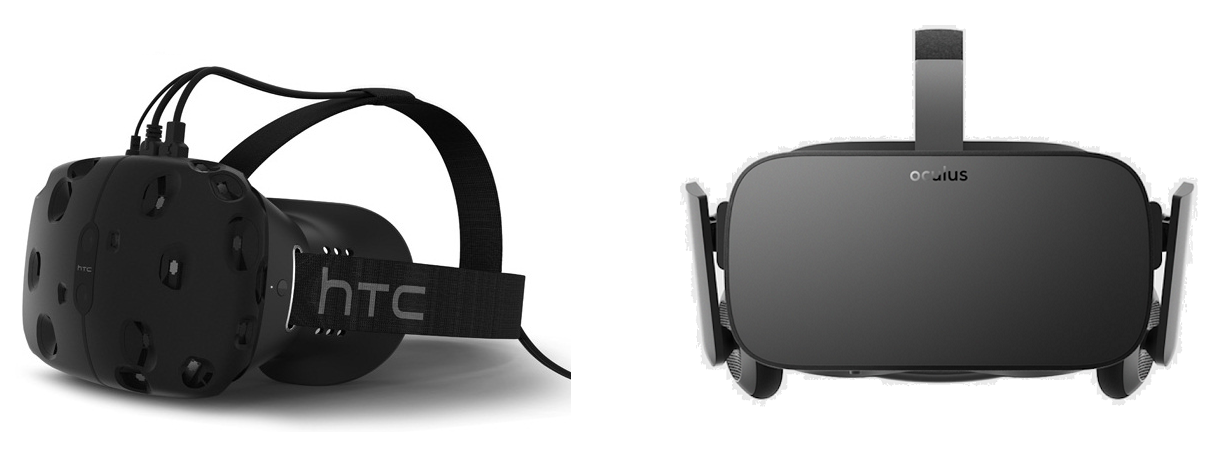Time to Pre-Order – HTC Vive vs Oculus Rift
HTC started accepting orders for its VR kit, the Vive, on February 29, 2016 and will start shipping them out on April 5 2016. Oculus has been accepting pre-orders for the Rift since early January and is keen on shipping them out on March 18 2016, i.e. 21 days ahead of the HTC Vive.
Let’s see what each platform has to offer.
- Display – both Rift and Vive are equal on this. Both offer two 1200 x 1080p displays that refresh at 90 frames a second.
- Price Tags – the Oculus Rift pre-order bundle costs $599, while the HTC Vive pre-order bundle costs $200 more at $799. This puts Rift in a better position when it comes to economy, though it does not come with its own VR controllers. No word yet on how much Oculus will charge for its Touch controllers.
- Controllers – Rift comes with an Xbox One controller, while Vive bundle comes with two of its own customized controller-sticks designed for VR – one for each hand. Oculus has its own VR-oriented Touch controllers in the works, but these aren’t going to come out in time for the pre-order bundle.
- Aspect Ratio – Vive offers a 16:9 display while the Rift offers a 2.35:1 ratio. This makes the Vive a better fit for viewing media in traditional wide-screen formats, while Rift offers a larger, window-like view for its content.
- Headphones – Rift bundle comes with headphones built into the headset, while Vive bundle only comes with two earbuds. This makes Vive a bit easier to use with your own headsets, though it is possible to wrap your own headphones around Rift’s built-in headphones.
- Tracking Area – Vive is able to track a much wider range of movement at 15 x 15 feet, compared to Rift’s 5 x 11 feet. This difference will only be felt when moving around a larger area, and will have no impact for users that are sitting in one place.
- USB Ports – Rift will need four USB ports, and three of those ports must be USB 3.0. Vive, on the other hand, will only need one USB 2.0 port.
- Video Output – Rift will work just fine with an HDMI 1.3 port, while the Vive requires either an HDMI 1.4 port or DisplayPort 1.2 to function.
- Games – Rift comes bundled with two games, Lucky’s Tale and EVE: Valkyrie. Vive, however, will come with three apps: Fantastic Contraption, Job Simulator and Tilt Brush. The last app is more a creativity tool than a game, so it’s fair to say that Vive is fact is offering two games.
- Release Date – Vive will start shipping out on April 5, while Rift will see a release on March 18. That’s a three-week gap in release dates which might seem ages for some fans. This gives Rift certain advantage.
- Console Streaming – both Rift and Vive will work on PC platform, but a partnership with Microsoft has made it possible to stream input from a PC to an Xbox One console. This allows Rift users to “play” their VR games on a Xbox One through the PC that Rift is connected to.
- Services – HTC is offering Vive Phone Services, which allows Vive users to handle incoming calls while being able to send and receive text messages while using the VR headset.
- App Support – Oculus has been keen on marketing Rift as a core gaming platform, and it shows with the inclusion of EVE: Valkyrie in the bundle. HTC is also looking at Vive for games (HTC has after all partnered with Valve for developing Vive), but has set its sights on health, educational, creativity and productivity apps, covering broader area of applications.
While this is not enough for seeing where Rift or Vive are headed, these points may help those who still hesitate make a more informed choice over what virtual reality platform you will want to play with. …and let’s not forget that PlayStation VR is releasing this year too!
Related Topics: HTC, HTC Vive, Oculus Rift, Oculus VR



